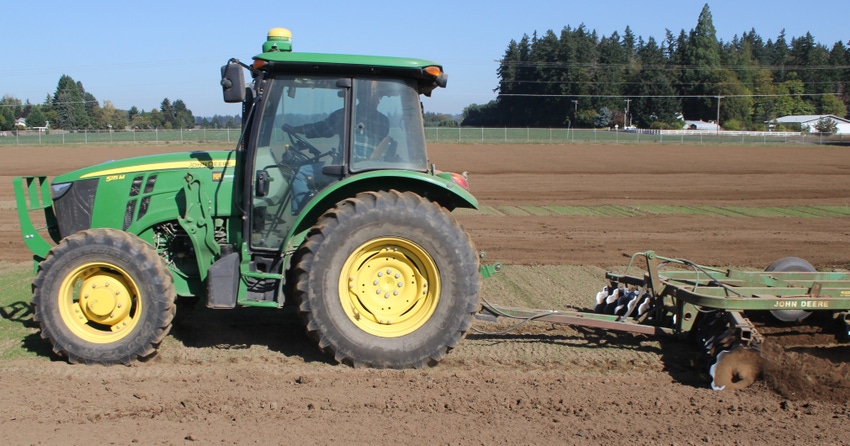October 1, 2021

More than 2,000 new farms were established in Oregon in recent years, and the total value of state’s agriculture, food and fiber sector exceeds $42 billion, according to a new economic analysis report by Oregon State University researchers.
Researchers in the OSU College of Agricultural Sciences and Extension Service have prepared the report every five to six years in partnership with the Oregon Department of Agriculture. The latest report provides a broad economic overview of the agriculture, food and fiber industry, and also a look at new developments, including the hemp and recreational marijuana industries and the impact of wildfire and COVID-19.
“The report provides a snapshot of where the Oregon agriculture, food and fiber sector stands,” said Jeff Reimer, a professor of applied economics and one of the authors of the report. “We’re able to do this analysis that shows linkages that wouldn’t be apparent if you were just looking at statistics about the economy.”
Highlights of the report include:
The agriculture, food and fiber industry is responsible for 9.1% of Oregon’s economy and 371,300 jobs.
Agricultural exports increased 25% since the last report was published in 2015.
The number of small and large farms increased, but there was a decrease in mid-size farms. There were 3,417 new one- to nine-acre farms, 21 new 2,000-plus-acre farms, but a loss of 1,217 farms in the 50- to 999-acre range.
The number of certified organic farms and the number of organic acres farmed dropped, but the value of products sold per organic acre nearly doubled, reflecting strong consumer demand for organic products.
The report notes 64,000 acres of hemp are registered in Oregon and that it can yield potential gross revenue of $15,000 to $25,000 per acre. That revenue primarily comes from the essential oils (such as cannabidiol, or CBD) that are extracted from the hemp flowers.
Gordon Jones, an assistant professor at the Southern Oregon Research & Extension Center and co-author of the report, notes that economic estimates for hemp still have some uncertainty, in part because federal legislation that made it legal to grow only passed in 2018.
More data exist on recreational marijuana, which was legalized in Oregon in 2015. It is now a $1.4 billion industry that employs almost 10,000 people in the state, according to the report.
Impacts of wildfire, COVID-19
The impacts of wildfire, particularly from 2020, on wine, hemp, hops, recreational marijuana and cattle and other livestock are also detailed in the report.
The impacts of COVID-19 are still being unraveled, said Bruce Sorte, an Extension economist and co-author of the report, but he notes the pandemic has significantly accelerated the mechanization of the food industry and how the food supply chain functions.
“This will be a particular challenge for rural communities as the labor market is disrupted,” he said. “Although the employers are struggling to find workers right now, I expect that to be far less difficult after COVID, particularly in food processing. Workers who are reluctant to return to work now may find those jobs are not available post-COVID.”
The report also outlines long-trending challenges to the sector, including availability and cost of labor, a slowly warming climate, a stronger U.S. dollar against the currencies of other countries, raising the cost of Oregon products to overseas buyers and lowering the cost of imports, and rising feed costs for livestock and poultry.
Strengths of the sector outlined in the report include the strong pace of economic recovery following the initial months of the pandemic; Oregon’s continuing comparative advantage in many crops, including seed crops, hazelnuts, pears, wine grapes, hops, potatoes, onions, mint, cherries, wheat, beef and dairy; ending of the trade war; and a recent commitment by China to expand purchases of U.S. agricultural products.
“The agriculture, food and fiber industry is extremely resilient and thereby helps our economy remain very resilient,” Sorte said. “This was shown throughout the earlier deep recession and now this pandemic.”
Source: Oregon State University, which is solely responsible for the information provided and is wholly owned by the source. Informa Business Media and all its subsidiaries are not responsible for any of the content contained in this information asset.
About the Author(s)
You May Also Like




